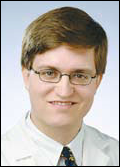
Tell me about your practice and the technology you’re using.
We’re a busy practice in a semi-rural county in North Carolina, where we take care of the rich folks in town and the incredibly poor people in town, just a very busy pediatric practice that in winter we routinely we see more than 35 patients per clinician per day.
It’s very important to us that we deploy technology that solves problems. The key problem that we identified when we started was that paper was eating the practice. As the practice got bigger, there were more places for the charts to hide. We wanted something that could help us with that.
We looked at a doctor data entry EMR. We were very unhappy with the point-and-click EMR because we felt that we couldn’t handle that level of slowdown. We also felt that our staff, which was not extremely technical, wouldn’t really enjoy that level of slowdown, either.
What we ended up doing was document imaging, starting with SRSsoft, and it’s been a great solution for us. When we were making the decision, we knew we were going to do a second office. That was an important part of being electronic. Not chasing the charts, secure electronic communication within the practice — those were all things that were huge value-adds for us, and having the faxable prescriptions so we wouldn’t have legibility issues with prescriptions. Those were all things that were a real value-add to us as to what to do electronic.
My big frustration is that so many people wanted an EMR because they were told they need an EMR, but they never asked what problems they are trying to solve. Just in the same way that you’re supposed to be trained in medical school, every time you order a test — why do you want this test? What is the reason that you’re doing it? And I very much encourage physicians to ask that same question about any technology decisions they make.
Because we had frustrations with our existing practice management company after we made the decision to do SRS, we switched to PCC, which is Chip Hart and the Vermont people. Because all the data that you need with the quality improvement, 95% of it is already in your PM database. We’ve been able to do great quality improvement work with that.
The big example right now is the Hib vaccine recall, which they just lifted the other day. It was very easy for me to run electronic reports to show me everybody three to 11 months who hasn’t had a dose of flu vaccine, who hasn’t had a dose of Hib vaccine. That is a real clinical upside, and people get these fancy EMRs, saying, “I need them,” and I say, “OK, what are you guys doing to make sure everyone’s had their vaccines?” Then I just get blank stares. People are getting these very fancy EMRs, but they’re not doing the most basic quality improvement work that could be done.
In the perfect rainbow-and-unicorn world of the future when all the computers talk to each other and the data is not in proprietary databases and you can do population data mining and you can do all these wonderful things — that’ll be great, but that’s not what exists. We can’t take the fact away that getting things much better than they are in a pure paper world doesn’t mean that you have to turn every highly trained physician into a doctor data entry monkey.
So is most of the quality reporting you’re getting right now is through your practice management system or through your EMR?
Through the PM. We have ways to do that inside the EMR, we have simplified things to do it, but honestly, we just haven’t gotten to that level because we’ve been having a lot of fun running reports inside the PM. If you really start talking to people — I mean, all an EMR is is a database, that’s all that it is. It’s nothing exotic, it’s not anything which showed up from the moon, it’s not alien technology — it’s just a database. And that’s exactly what your PM system is — it’s just a database.
The question is, do you have structured queries to ask? The only value-add you get from doing doctor data entry is that potentially you can then ask very subtle questions of your data sets — “Show me everybody who’s got some new anti-high blood pressure medicine who then came in and had wheezing.” You can do that in a full-bore EMR, but you can also get pretty close just inside your practice management system. If your prescriptions are all electronic, you can run a list, “Show me everybody who had this medicine,” and then you can correlate it with your practice management database.
I get very skeptical about why people want to make me, as a highly-trained clinician, sit there and point and click my way through physical findings when the reality is that all that most of the usefule stuff is in the PM system as the diagnosis list. You’re really able to get all that data another way, so why should you turn your physicians into clerks?
I know you’re a big proponent of physicians really understanding the coding and documentation process. Why should doctors be on top of this? Why not just leave it to the billing staff?
The only person who knows what happens in the room is you. It’s not the billing person. Billing staff are trained that they’re supposed to defer opinions of medical decision-making to the physician that’s in the room. That’s just correct coding. As far as knowing what level to pick, you can always ask other people to do that, but when I talk about coding, if you’ve mastered the Krebs cycle, you can learn how to do coding.
The people that are coming to audit your coding are never going to be physicians. If you’re lucky, it’s an RN, but most likely it’s not anyone clinical, and it’s someone who, if you’re lucky, graduated high school. For physicians to say that they just can’t learn this is not realistic.
It doesn’t mean that every physician needs to be a coding guru, but there are certain very basic and simple things that we are all absolutely capable of doing. You ever see a lawyer who doesn’t know how to bill? It’s just something we have to know. It’s part of controlling your destiny.
How does the use of technology in the practice affect the quality of care you’re able to provide your patients?
More access to information, access to charts at home at night when you’re on call, the ability to electronically audit data, again, using the practice management system to find children that are delayed on vaccines. One of the big things now are the people who believe Jenny McCarthy instead of the Centers for Disease Control, the American Academy of Pediatrics, the Advisory Community on Immunization Practices, and basically every scientist who’s ever studied vaccines.
There are certain populations of people who just stopped coming to the doctor any more. They’ve stopped coming for check-ups any more. Unless you have a way to find those people, you can’t educate them appropriately. There are a lot of physicians who would say, “Gee, we have hardly any people who are refusing vaccines,” but then you go and you look, and I can find patients who came in for sick visits but never came for check-ups.
Other quality improvement stuff — it’s easier for the telephone nurse. Our telephone nurse sits on the phone and talk to parents all day. She’s able to see the charts, she can see what happened at the office yesterday, she can send e-mail messages that are secure inside our systems and permanently affiliated with the charts to the doctor that saw the patient a week ago that she has questions about.
You basically go from working in serial to working in parallel. Lost chart safaris have gone away, so you always have availability of the chart when you’re seeing the patient. Before, maybe it was in billing, maybe it was with the phone nurse because they were doing a prescription refill. So that kind of access to information is there. You have all that even without doing a full-blown EMR.
And how do you personally interact with the EMR? What type of information are you putting in and how are you putting it in?
We’re continuing to document on our same paper templates that have been refined in over 40 years of the practice history, so we get to document things the way I want it. If I want to ask about well water, I don’t have to argue with a programmer in New Jersey that I want to ask about well water. It’s an element that I can create right there and have all that set up.
As far as how we put data in, we do do some data entry when patients transfer in or if they get vaccines at another practice. We do enter that into our PM system and it also gets double-entered into the EMR, which is obviously not your first choice. But I’d much rather spend a little bit of staff time on that than to slow my physicians down every patient every day.
We enter all our problem lists and we do all our prescribing electronically through the computer now. That’s another way technically that we’re entering data in the EMR. And then we are able to poll the database and say, “Show me the list of everybody who’s on a certain medicine,” I can say, “Show me what doctor and everything they prescribe.” You can really do a lot of quality improvement stuff, just finding out what’s going on in your practice, whereas in the paper world, you never could do that.
Your SRS EMR is not CCHIT certified. Why risk the potential loss of ARRA funding by going with a non-CCHIT product?
Because it’s vaporware. ARRA funding is the ultimate vaporware. No one knows what it means. $44,000 is all that pediatricians get because we’re not as important as adult doctors. It’s basically irrelevant to me. Even as a lowly little pediatrician, I bill so much more than that in a year’s time. For you to make me do something that slows me down — that dog just doesn’t hunt; it’s just not going to happen. I don’t really believe it’s relevant.
I think the other problem with CCHIT is that the big vendors got together and had their own little clubhouse. They’re basically doing what makes sense to them and they’re deciding themselves what a good product is, which is so backwards of how the process ought to run that it’s even hard to comment on. Nothing is certified because you’ve had a 7% adoption rate. I would argue that the market is the ultimate certifier. If the people out in practice look at CCHIT EMRs and say, “There’s no way I can do this; it slows me down too much”, it’s game over.
I don’t really see it as relevant. That’s just not enough money for it to be worth it for me to do this. This is just a major gift to the EMR industry and it’s the guy whose head of the VA said, “We’ve basically had major market failure,” and that’s why you’re having to pay people to adopt EMRs that slow them down. A one-time payment or a couple years’ payment is just not going to be enough to convince me that I should do something that doesn’t make sense to me.
Once you’ve seen one medical practice, you’ve seen one medical practice, and so you really need something that works inside the culture and the way that practice operates. It’s kind of like, “Who’s the person driving the train here?”
My response is that EMR has to work with the way I practice. I should not have to totally change the way that I practice just to document. No physician should ever be sitting in a room while a patient is telling them a simple or a complicated medical story, and ever have in the back of their mind, “How am I going to enter this into the computer?” It should not be creating diagnostic areas where we are squishing our brains into these little pegs, into these little holes that are set up by programmers who have no understanding of the practice of clinical medicine. That’s unfortunately the reality that I think we still have today. It’s just not enough money.
The other thing is, what is the real upside? The most important question you ever ask is why are people using these EMRs that can’t do meaningful quality improvement reports? Everyone claims they can, but their quality reports are like, “Show me everybody who hasn’t had a mammogram who’s over whatever age.” That’s great, but that’s not really relevant to me as a pediatrician. I’ve got simple, flexible technology that work well for me.
The other issue is that pediatrics is the red-headed stepchild in American medical care. It’s a very low-dollar thing, very few people are interested in it, so I’m not really afraid that the government is mandating that I have to have that EMR. At the end of the day, if they’re going to come out with a major mandate, people are just going to say, “I’m not going to do that” and they’re going to quit.
No one is getting paid to buy an iPhone. People are getting iPhones because it’s a fun technology that makes sense. That’s the thing that you need to do if you really want to drive EMR adoption — you have to have products that work well. And we shouldn’t look at technology as if there’s just one path. We should look at people that are doing document imaging and other things that makes sense to them that still give them 24/7 availability of medical records, electronic prescribing, knowing exactly what lab tests they’ve ordered, ability to birddog and chase referrals to consultant results, referrals to laboratory testing. You can do all that without doing full doctor data entry.
I’m just struggling to find out why CCHIT matters. It’s as if the Big Three automakers all got together and decided they were going to build their cars a certain way and certify that as the way they were going to make cars. You think that’s more relevant than whether the consumer wants to buy it?
What you really need is a governmental organization led and driven by physicians who decide what are the key criteria that are relevant to medical care. I find the whole concept that we’ve had CCHIT for how many years now and the same vendor can’t electronically transfer electronic records on one patient to the other same vendor — they can’t even do that, and they have a certifying body called CCHIT? It just seems ridiculous.
Anything else you’d like to share?
You have to ask, “Why are you doing things?” Everyone’s getting these EMRs because they’re supposed to, but they don’t really ask what they’re going to get for it. I go to meetings and say, “OK, guys, you’ve all got these fancy EMRs. How many of you are doing recalls for all your asthma patients if they haven’t had a flu vaccine by October 1?” And you can hear the crickets chirp.
And I go, “Why the hell are you doing it? What is the reason?” The answer is that you really should come up with a list of what you want out of an EMR, and then you should ask if you can get there without getting a full-bore EMR that is a proprietary software that has you locked in with them forever. It’s just craziness. And pediatricians also have to maintain their records for 25 years because we have to get the age of majority plus a certain number of years, which varies state to state. It’s a lot more of a commitment for a pediatrician to maintain a system for forever than it is for adult medicine where you need to maintain it for seven years or whatever.


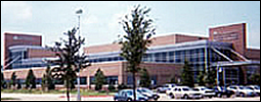

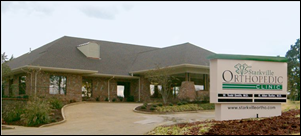
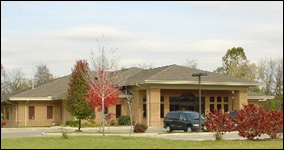

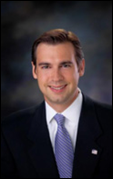
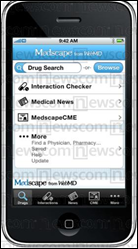

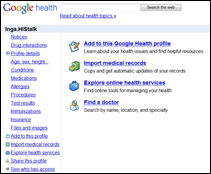


The article about Pediatric Associates in CA has a nugget with a potentially outsized impact: the implication that VFC vaccines…